Movie Review – Australia & Moulin Rouge
Putting Australia up against Moulin Rouge!, to me, almost seems tantamount to betrayal. It just so happens that Moulin Rouge! is in my top three all-time favorite films. I had a mental orgasm the first time I saw it in the cinema, and have loved it ever since. From it’s incredibly eclectic style and dazzling cinematography, wildly hyper-real editing and dramatic core, to the more surreal moments of intimacy and almost poetic gushing of emotion, Moulin Rouge! is less a film and more a cinematic version of the Space Shuttle launch. It packs such an emotional punch into it’s musical numbers and hysterically stylized dramatic moments, it’s like being strapped to the front of an express train with no driver.
This article contains material that has already been published here at fernbyfilms.com, in our review on the film Australia. You can check that review out here. What you read below is a republishing of our article originally presented over at moviesmackdown.com, and which is now available to read right here!!
************************
Australia is a continent, my country, and now, finally, a movie. To get the silver-screen version made, they gave one of the most visually stylish directors working today more money than he’d ever had for a film before, and let him make an epic about love, war and imperial indifference. A few years ago, that same director was given license to pilfer some of the worlds’ great songwriting talent and shoehorn it into an Aussie-made Bollywood musical. The view from Australia (the country) is that the duo of Moulin Rouge! and Australia represents the finest of our country’s local talent, both in front of, and behind, the cameras. Our article today pits director Baz Luhrmann against himself to see which of his passion projects is superior. The mythical, intimate-while-still-epic Moulin Rouge!, or the historical, epic-while-still-intimate widescreen adventure of the Outback, Australia?
Dogged by production problems (From Russell Crowe bowing out of the lead role several months into planning, to a major set flooding in a once-in-50-years flood!) Australia as a film is the newest contender for a nations pride. It tells of a young British woman’s discovery of our great country, of a passion she never thought she’d feel again, and a sense of belonging that, while certainly expected, is still revelatory in the execution. Baz Luhrmann’s epic, widescreen drama/adventure film, which, with an estimated budget of around $AU130m, is among our more expensive cinematic efforts, and tells of a burgeoning country beset by impending war, imperialist ethics and a raw, pulsating heartbeat that tantalizes the soul: this, dear reader, is Australia the movie. In a move destined to be critiqued until the cows come home, Luhrmann has taken our national brand name and somehow injected it into a film that’s as broad and sweeping as the country it’s named after. With Nicole Kidman (Kiss Of Death Kidman she’s often referred to around these parts…) and a buffed (and bronzed) Hugh Jackman, as well as a veritable smorgasbord of Australian local talent, Australia is, apparently, “Baz Luhrmann’s Aussie version of Gone With The Wind“. I paraphrase the man himself in saying that.
Filled with stunning vistas, some dynamite acting performances (including a young Aboriginal lad, Brandon Walters) and lavish, opulent production values, it’s hard to think of a more suitable extravagance to label this film with than that. Luhrmann has poured his heart and soul into this patriotic piece, as well as plenty of obvious messages that play out through the script. The treatment of Australian Aborigines, the political upheavals in the stock routes, the grab for land within the outback; all these themes are touched upon in some slight way. It’s a gargantuan epic, with the hallmarks of a director in top form, who is chockers with emotion and spirit to bring a film like this to life.
On the other side of the world, in a city known as Paris, there exists a nightclub. It’s the European version of Studio 54 for the old-timers, the place where vaudeville and risque showgirls danced the night away with the rich and famous of the continent. There’s a faux-windmill stuck out front, facing the world like some kind of misguided logo (what on Earth does a windmill have to do with a dance-hall/bordello?) and the lights, smoke and music from inside will whip you up into a frenzy of orgiastic pleasure, from which you’re most likely to become addicted. Bazz Luhrmann’s sumptuous, ravishing musical, is as far from the heat and dust of Australia as you can get. It’s a film filled with stunning costumes, sets and some extremely stylized acting performances: again, Nicole Kidman plays the heroine, Satine, a lovely courtesan who falls in love with a lowly playwright, Christian, played with convincing naivete by Ewan McGregor. Moulin Rouge! tells a story of forbidden love, of music, poetry, and again, love. Love get’s a hammering in this film, a kind of riff on the Bollywood musical with lights, dazzling costumes and some real razzle-dazzle music choices from Lurhmann and composer Craig Armstrong. The film is entirely studio-bound, perhaps rightly so in giving Moulin Rouge! a strange artificiality, which does a lot to help us get “into” the world Luhrmann seeks to create. The stylized and frenetic production is a visual feast, a gorging of musical styles, editing and acting that borders on both luminous (Kidman) and ludicrous (Richard Roxburgh), in a way that brings pure joy to anybody who views it. It’s a musical, firstly, and a drama/comedy secondly. From the soaring lyrics of Bernie Taupin to the grungy sidewalk flavor of Nirvana, Moulin Rouge! samples it’s soundtrack from a variety of genres, eras and styles. It’s a heady mix that will either enchant you, or, if you’re a musical purist, infuriate you.
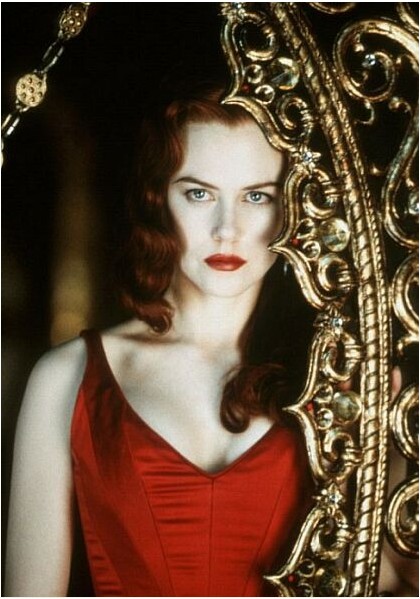
For those reading this who live outside Australia, it will be hard to determine just how a film like Australia will be perceived in the country the film takes it’s name from. It’s backed by Australians, filmed here, produced here, all the actors are from here, in fact, almost every aspect of this production is a local effort. Thusly, Australians have every right to be proud of the product we are launching upon the world stage. Australia, as a film, has had a somewhat rocky past. It began years ago, with the failure of Luhrmann’s Alexander epic to eventuate (which, in a small side-note, I’d love to have seen go up against Oliver Stone’s blundering epic of the same name!) the Australian director turned to something a lot closer to home. Out countrys history is not as lengthy as many others, Europe, the United States, for example: you guys have a vastly deeper cultural history than the land Down Under.
Australia, for those looking for some background history, was colonized by the British in the late 1700’s, and became a nation (Federation) in 1900. Effectively, we only have 200 years or so of White Settlement history to work with. The Australian Aborigines, who can claim an earlier 40,000 years of history (that’s right, Forty Thousand Years!) were subjected by the white settlers to some of the most horrifying human rights abuses and immoral acts ever committed on an entire race. The entire Tasmanian Aboriginal population was wiped out, erased forever from the natural landscape they had lived in for thousands of years. Tasmania, for the geographically disinclined, is the apple shaped island to the bottom right of Australia, just below Melbourne. Heck, that’s what Google Earth is for. Anyway, when white settlers came from Europe, they subjected the local inhabitants to some awful punishments for the single crime of having different colored skin. It’s an analogous situation to Black slavery and subjugation in the US, or perhaps even more analogous to the eradication of the American Indian tribes during the exploration of the Wild West. Australia has a long and checkered past, both good and bad. We’ve helped fight in both world wars, other wars in which we were never wanted, and should never have become directly involved. We stand shoulder to shoulder with other countries as part of the Commonwealth of Nations under British rule, and consider ourselves an ally to many nations across the planet.
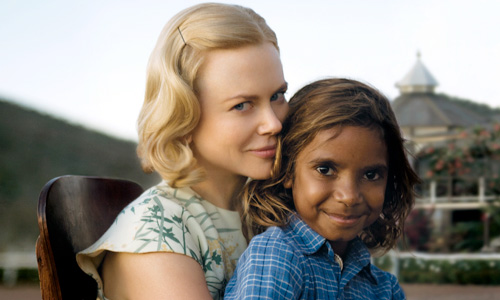
Our country is the driest on the planet. The state I live in, South Australia, is the driest state in the country. We have the three or four of the most poisonous snakes on the planet roaming unfettered through our scrubland (you guy’s know it as the Bush) and our Outback contains some of the harshest, most inhospitable landscapes to be found anywhere on Earth. Women won the right to vote in South Australian elections in 1894, and it wasn’t until 1902 that they could vote everywhere else in the country. In 1983, we took the America’s Cup from the US in one of the greatest international sporting triumphs ever seen in our country. We were only allowed to eat kangaroo here in SA in 1989, and it wasn’t until 1992 that the animal was able to be commercially eaten throughout the country. Our sporting elite and entertainers are among the most popular and widely regarded anywhere on Earth. Well, we don’t lay that claim to Russel Crowe, or perhaps even Mel Gibson (who got his big break here a few years ago.. we love that!) We have some of the cutest animals found anywhere on Earth: the Koala and Kangaroo are balanced out by the not quite so cuddly Tasmanian Devil, which, if you ever see a real one, is actually nothing like the Looney Tunes version you’ve all grown up with on TV. And our Kangaroos can’t bounce on their tails like the cartoon one does either.
Australia contains a population with one of the highest ethnic mixes anywhere on Earth. People from every country on the planet, including some you’ve probably never heard of, live on our shores. Our immigration policy is, by many standards around the world, among the harshest and most rigorous anywhere. For good reason. This is Gods country, folks. Vast deserts, ravishing tropical jungles, snowy mountain peaks and a more diverse ecosystem than anywhere else, including South America and Asia. Bold claims, I know, but when you come here, and you will, you’ll see why we love living here.
Why am I telling you all this? Simple. Australia is a country many people know of, but not necessarily know about. Which is why, as part of the promotion for the film Australia, Baz Luhrmann was also approached by our tourism industry to make sure anybody not living here, wants to. Our Tourism Commission, which is essentially a bunch of salespeople sitting about a back veranda figuring out ways of enticing folks from overseas to come here and visit, hasn’t made a good fist of it lately. You may remember their previous effort, the “Where The Bloody Hell Are You Campaign” struck the wrong kind of image for our fair land, according to most overseas polls. (“Bloody Hell” is Australian for saying Dammit, or something like that). So it was with the greatest fanfare that Luhrmann and his crew filmed, on the side, a series of commercials for overseas consumption that presented a lavish view of our wonderful country.
An epic tale of love, struggle, with a backdrop of war and a country finding it’s feet amongst other nations, and finding it’s identity after Federation, Bazz Luhrmann has come up with one of the biggest challenges of his career. Not only does he have to sell his behemoth of a film to the foreign market, but he has to persuade his own countrymen to accept the film as well.
Australia is a juggernaut of cinematic storytelling. Baz Luhrmann has a commanding use of film, his editing and stylish direction are truly world class, and we see this demonstrated here yet again. The man certainly knows how to fill a movie screen with some wonderful shots. His portrayal of the country is almost like a painting, the colors and hue’s bring to life a part of the world few people truly get to experience. It’s like a canvas, and Luhrmann paints with multiple brushes: some, broad and simple strokes, are your traditional eye-candy stuff, while the smaller, more intimate strokes are reserved for the emotional, dramatic content. A lot has been mentioned of Nicole Kidman’s performance in this film; you think she’s a try-hard who can’t act, or a potential Oscar winner. I doubt’t she’ll win any awards here with her somewhat awkward English accent, but she’s not all that bad. I had my doubts after initial press labeled her “frosty”, “dull and “lifeless” in her acting ability, but I found her charming in almost all aspects of her showing here. Jackman almost needs no comment whatsoever: he’s been great in every film role I’ve seen him in, and this film is no exception. His Drover character is all charm and charisma, the real beating heart of our country personified in this muscular, masculine character who falls in love with Sarah (Kidman), the English rose who travels to Australia to claim the title to her husbands cattle station. Kidman and Jackman have a definite chemistry, although occasionally you get the feeling it’s not quite… right. There is definitely something off-key about their relationship, a subtle forced-ness that is quite disingenuous, however hard Luhrmann tries to get it to click. Still, it’s a relatively minor quibble, but compared to the Kidman/McGregor chemistry in Moulin Rouge!, Jackman can’t quite muster up the same material.
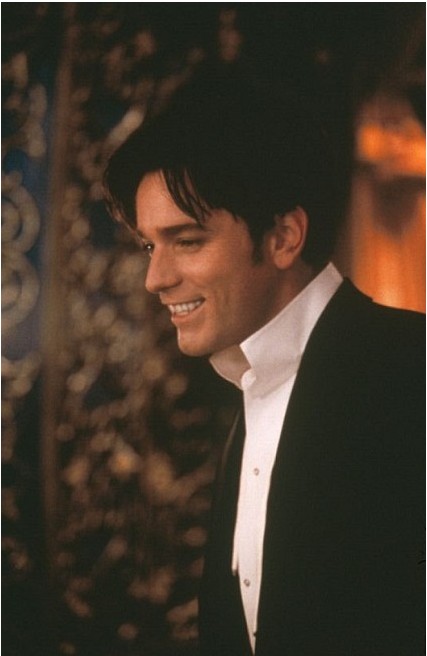
The plethora of Aussie acting talent is almost too much to bear. Everybody whose anybody in Australian TV and film is here in this film: particular kudos to Bryan Brown, who will be known to most audiences as Tom Cruise’s mentor in Cocktail, and David Wenham, also known as Faramir from Peter Jacksons Lord Of The Rings Trilogy. Brown and Wenham play the film’s primary antagonists, and they do a wonderfully job, both with icy stare and slimy hatefulness: you just want them to bite the big one the entire time. Mention must be made to the young Brandon Walters, an unknown actor who plays the pivotal role of Nullah, who has narrated the story for us and is a catalyst for the majority of the action throughout. His natural ability, his wonderful screen presence and inspiring performance have already been touted as potential Oscar nomination material: I have to say I agree with “them”, because he is the single best part of the whole film.
If you don’t want to see the film purely for Kidman, then do yourself a favor, see Australia for Walters’ screen performance, which is simply captivating.
The film is long, it has to be said (just slightly longer than this review!). Coming in a smidgen under three hours, you start to feel the bloated conceit of somebody who doesn’t know when to cut a scene. Luhrmann has crafted this film with care and precision, it’s just that sometimes, the screenplay by Luhrmann, Ronald Harwood, Richard Flanagan and Stuart Beattie is a little thin in places, and could do with some tightening up. If I had to be super-critical, the lovey-dovey stuff with Jackman and Kidman could have been trimmed in places, and the second act is a little overlong, however, this is not really going to ruin repeated viewings for me. I felt, while sitting in the cinema, that the whole thing could have been a lot stronger narratively, with less emphasis on glorified slo-motion and more on the story. Taking that into account, Baz is a pure artist, a storyteller who will drag an emotion out of you no matter how hard it might be for him. If you based a film’s length as your comparison for Gone With The Wind, then Australia will feel much like that seminal Hollywood epic: however, for structural and narrative cohesiveness, I found “Australia” a little looser, a little rugged, in it’s execution.
Putting Australia up against Moulin Rouge!, to me, almost seems tantamount to betrayal. It just so happens that Moulin Rouge! is in my top three all-time favorite films. I had a mental orgasm the first time I saw it in the cinema, and have loved it ever since. From it’s incredibly eclectic style and dazzling cinematography, wildly hyper-real editing and dramatic core, to the more surreal moments of intimacy and almost poetic gushing of emotion, Moulin Rouge! is less a film and more a cinematic version of the Space Shuttle launch. It packs such an emotional punch into it’s musical numbers and hysterically stylized dramatic moments, it’s like being strapped to the front of an express train with no driver.
Ewan McGregor, whom I initially thought would be woefully miscast as the leading man opposite local leading lady Nicole Kidman (in what I consider to be her best role) manages to overcome the narrative flaws and generate a real chemistry with both the viewer and the rest of the cast: he’s a short, chumpy bloke, but we like him a lot. Kidman is pure radiance in this, her triumphant success as Satine, the showgirl from Paris who has a really bad case of consumption. Moulin Rouge!, while being an enormous success for Australia as well as 20th Century Fox, and consolidating the success of Australian made films, was an important leap forward for the film industry as a whole, as it laid the foundations for the resurgence of the musical as a film art-form. Following Moulin Rouge!’s lead, came Chicago, and then more recently, Hairspray, all films which have had critical as well as commercial success. The success of Moulin Rouge! made sure that movies with musical numbers in them were fun again.
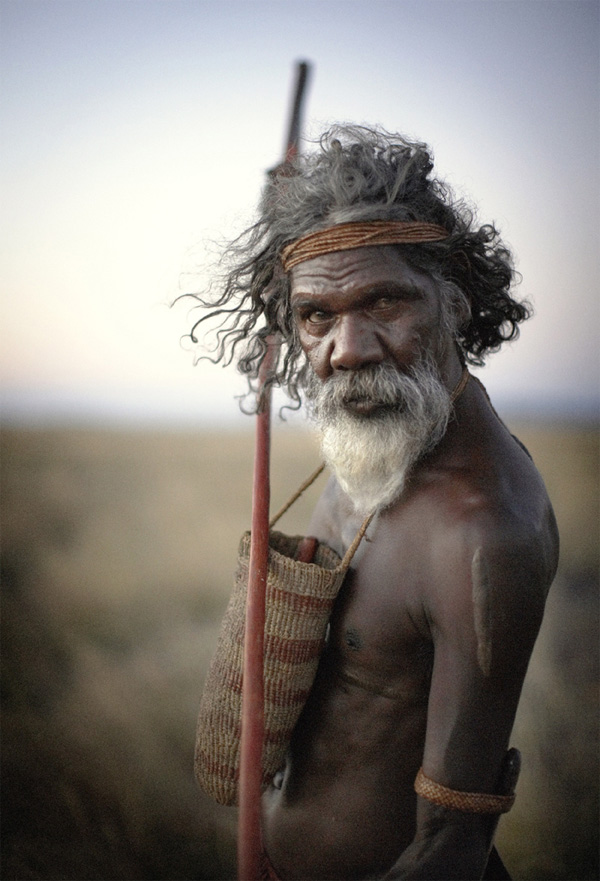
Moulin Rouge! is a tragedy, a romance, a musical, and mostly, it’s great human drama: there’s barely a moment in the film where you can stop to look out the window. The opening twenty minutes are a tour-de-force of editing, sound and motion, mixed with a thunderous dance track and some astounding costuming. The razzle-dazzle of the nightclub entice Christian (and us) inside, beckoning us into the seedy, salacious Paris underworld.The frantic hip-thrusting and knicker-showing production that ensues is both dazzling and enthralling, the sweaty pulsating of a nightclub not too far removed from dance-halls of today: it’s highly stylized of course, nowhere in the history of France was there ever such thunderous bass and highly complex musical performances. Moulin Rouge! opens with such bravado, such energy, you wonder whether it’s able to sustain such intensity over it’s two hour running time. Yet it does just that, clawing our attention to the screen, bombastic editing and effects ensuring we cannot look away. The pure joy and elation experienced by both the viewer and the on-screen characters as they journey through the world of Moulin Rouge! is as visceral as cinema can get.
Eventually, however, as in any good love story, tragedy must strike. With Satine gravely ill, and worsening each day, the owner of the Moulin Rouge, Mr Zidler, keeps this secret from Christian. The Duke, played with smarm and considerable anemic affability by Richard Roxburgh eventually discovers that the object of his lustful desires (Satine) is actually in love with the writer, and brings his full fury down upon everybody standing in his way. The finale of the film, with the first full performance of the show-within-a-show, Spectacular Spectacular, is a full blown orgy of color and song, an analogous representation of the story we are seeing in the film itself, a mythical exposition of drama and parody, of overtly hyper-real emoting and, eventually, the expunging of the truth from all parties, regardless of consequence. Then, it’s over. The silence falls, and we are reminded again of just how gravely ill Satine is. Her final fate, resting upon the stage where she has bared her soul, finally, evocatively, moves us, brings our hearts to our mouths and forces us to confront that which we often refuse to: the greatest thing you’ll ever learn, is love, and be loved in return.
I guess in much the same way Australia is a lavish, anamorphic look at our country’s history as it is a dramatic retelling of a fictional character, Moulin Rouge! is similar to it in that respect. Moulin Rouge! places us on the cusp of a historical context (no matter how stylized) and lets us experience a taste of that world, since it’s now a distant memory. The pre-WWII era of Australia, and the colonial malfeasance associated with this period in our history, is almost seethingly similar in terms of tone and frustration. Both worlds have their rules, their social structures and cultural ethics which, in both films, are equally able to be torn down by those who seek to better themselves and others. Luhrmann has, in essence, told a similar story in both films. The characters and style are different, yet the central theme is almost identical when you pare away the overlaying fluff. Two people of different backgrounds come together and fall in love. The viewer feels their frustration at society’s perceived vacuousness towards their situation: he’s below her, he shouldn’t love her, and if he does, then he faces sorrow and heartache.
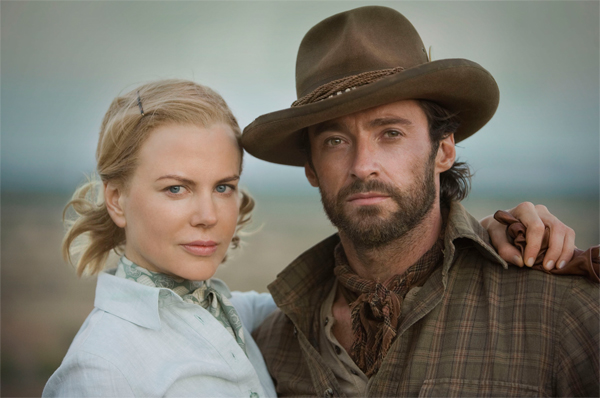
Both are stylistically opposites, even though the themes and central motivation is essentially the same. Both have wonderful cinematography, some great acting and stunning production design. Yet both are utterly different. My choice, gentle reader, is based simply upon one key factor. The WOW factor. Which film blew me away at the cinema? Which film, for me, had greater emotional, intellectual and body-shaking impact? In 2001, Moulin Rouge! gave me a rocket-ride into cinematic heaven. The power of this film was singularly the most amazing creative experience I have even been privileged to witness. Australia, with it’s patriotic heart worn proudly upon it’s sleeve, moved me in a way that’s harder to define, harder to describe. As far as a loyal Australian can say, Australia is a wonderfully evocative film filled with superb vistas and stunning design, yet it doesn’t contain the impactful power of Moulin Rouge!. From a narrative perspective, Australia is a better film, less inclined towards showy infantilism (Jim Broadbent, I am looking at you!) and more easily accessible by most audiences. Both films “blew me away” in one form or another. But I still maintain that Moulin Rouge!, for all it’s critical savaging in the intervening years, remains Luhrmann’s most evocative, stunningly powerful cinematic masterpieces.
**********************


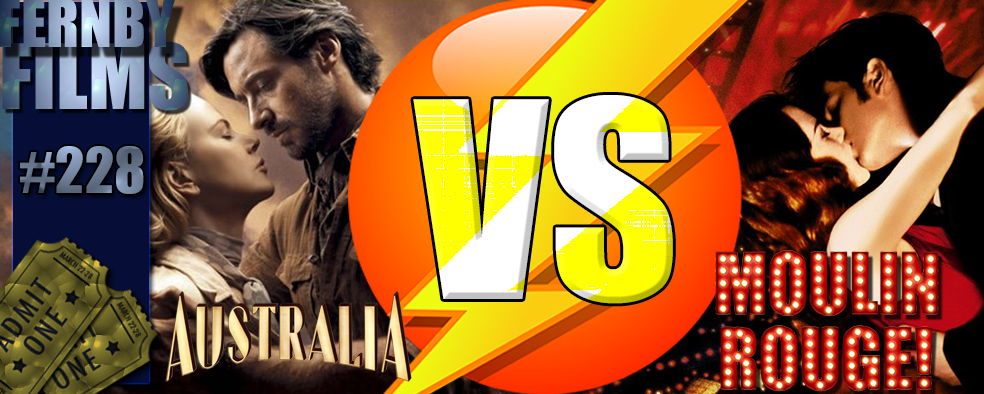
A decent look at one of my favorite films, Moulin Rouge. Loved that film. I didn't think much of Australia, however, but since you're an Aussie I can understand why you'd like it more than a foreigner. I think MR is Nicole Kidman's best performance in a film, hands down.
Thanks for stopping by Josiah.Glad you loved Moulin Rouge – it's a great film indeed. And I'm sorry you didn't find Australia as good a film as I did, but then again, neither did many Australians!